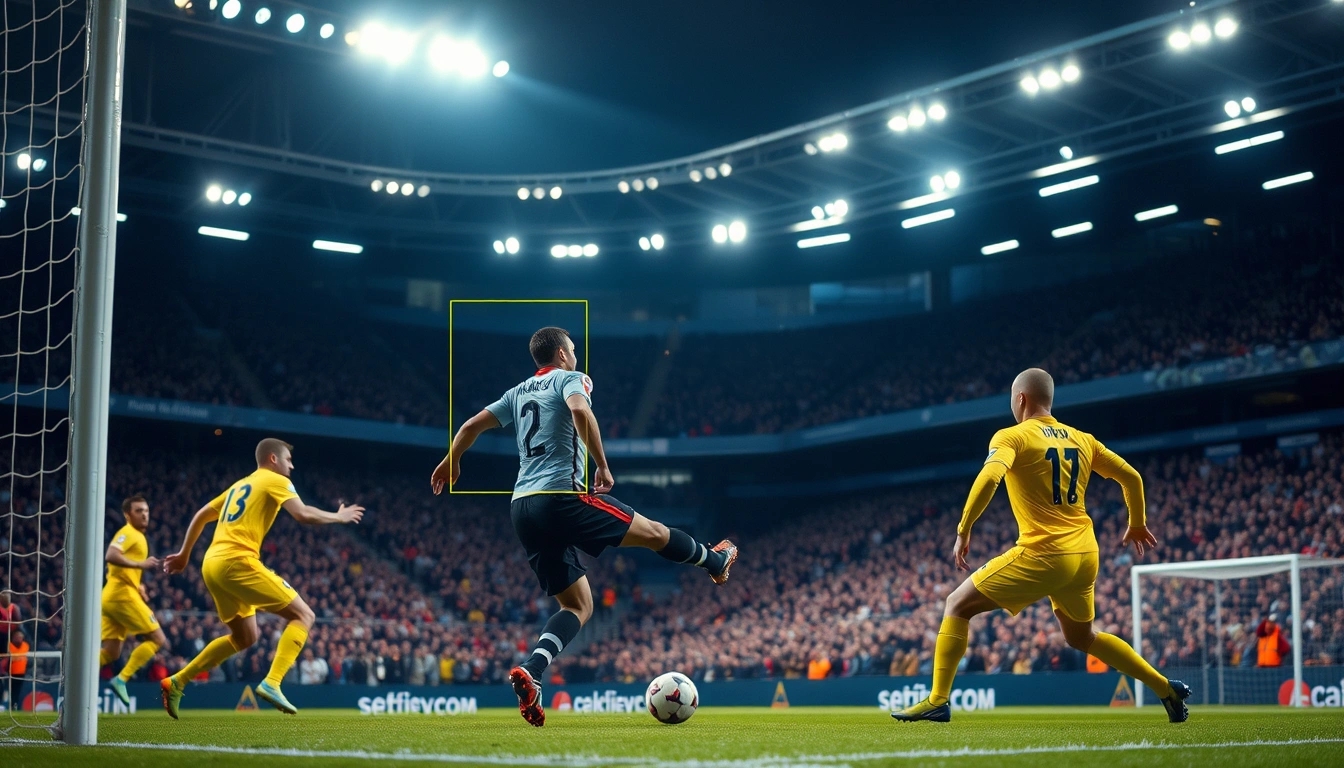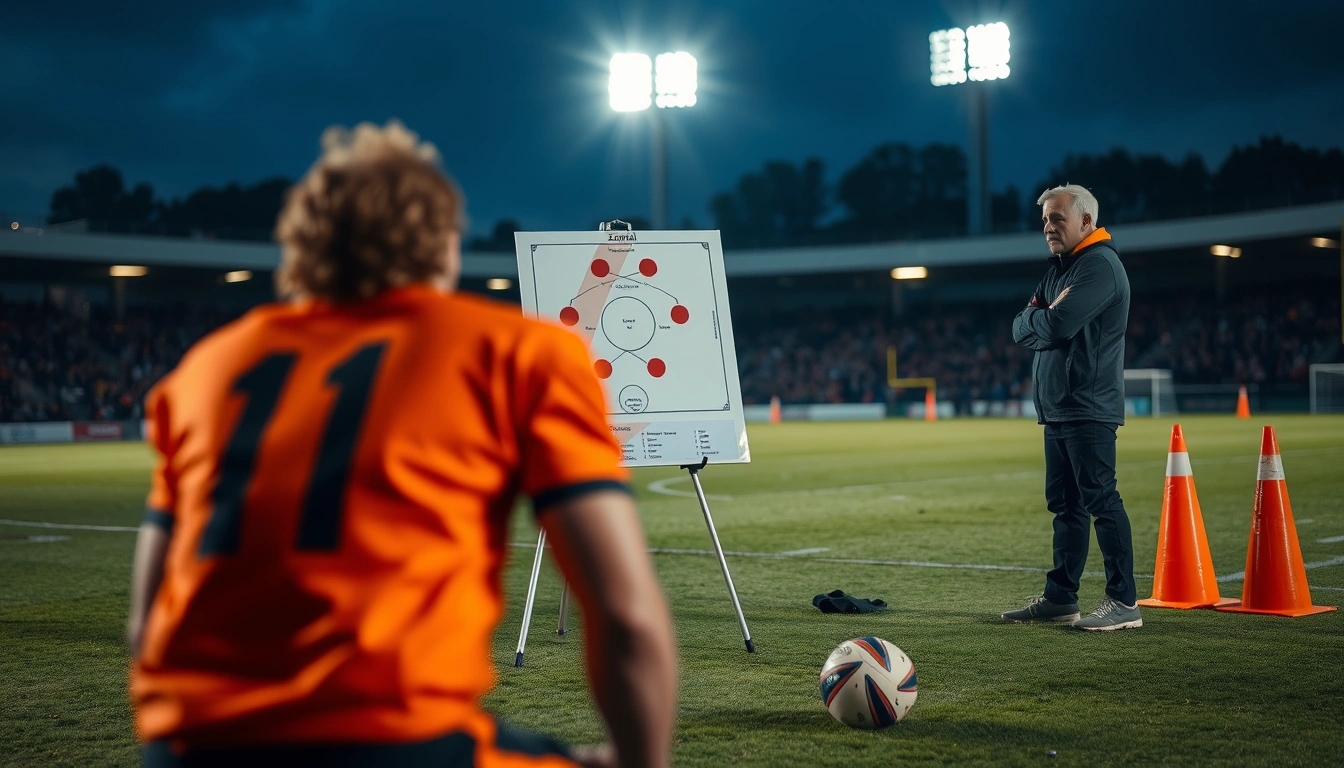Corner kicks. Ah, the bane and blessing of every football coach’s existence. One minute, your team’s breathing easy, the next, you’re scrambling like a headless chicken trying to plug holes in your defense. The eternal question remains: when that ball curls dangerously into the box, do you trust zonal marking or lean on good old man-marking? Spoiler alert: there’s no magic bullet, but let’s unpack the chaos anyway.
Zonal Marking Basics
Zonal marking is all about territory, not personalities. Instead of shadowing a specific player like a stalker, defenders guard a designated patch of turf. The idea is simple—hold your ground, clear the ball if it lands in your zone, and don’t let attackers sneak past. Sounds neat, right? But here’s the rub: attackers love exploiting the seams between zones, darting in and out like mischievous cats.
- Defenders focus on space, not players
- Requires high awareness and communication
- Less physically demanding than man-marking
Man-Marking Fundamentals
Now, man-marking is the classic “I’m on you like glue” method. Each defender has a target, and they follow them like a shadow. It’s personal, intense, and sometimes borderline chaotic. Sure, it can frustrate attackers by cutting off their options, but it’s also a stamina sucker and prone to mix-ups. Ever seen two defenders lose their man because they both thought the other had him? Yeah, not pretty.
| Aspect | Zonal Marking | Man-Marking |
|---|---|---|
| Focus | Space | Individual opponent |
| Communication | Essential | Critical but simpler |
| Physical Demand | Moderate | High |
| Vulnerability | Between zones | Switching errors |
Look, both systems have their quirks. Zonal marking gives you structure but can feel like Swiss cheese if attackers are clever. Man-marking’s aggressive but can turn into a nightmare if players lose concentration. So what’s the answer? Some teams swear by mixing the two.
Hybrid Systems: Best of Both Worlds?
Imagine a defense that assigns zones but also picks out key players to shadow inside those zones. Sounds like a recipe for confusion? Maybe. But when done right, it balances discipline with flexibility. The key is clear roles and communication, or else you’ll end up with defenders tripping over each other.
- Assign zones to most defenders
- Man-mark dangerous aerial threats
- Use a “sweeper” to cover loose balls
Final Thoughts
Defending corners is like playing chess in a hurricane—strategy meets chaos. Whether you lean zonal, man-mark, or a Frankenstein combo, it boils down to training, teamwork, and a bit of luck. And hey, sometimes you just gotta pray the keeper pulls off a miracle.
So next time your team faces a corner, remember: it’s not just about marking, it’s about reading the game, trusting your mates, and maybe, just maybe, keeping your cool when the ball swings in.
Zonal Marking Basics
Zonal marking in soccer defense is a bit like setting up a chessboard: each defender is assigned a specific zone to patrol rather than shadowing a particular opponent. Sounds neat and tidy, right? Well, it mostly is, but don’t be fooled into thinking it’s some magic bullet for corner kicks. It’s a system built on razor-sharp positioning and constant awareness, but it has its quirks and vulnerabilities.
At its core, zonal marking means defenders stand guard over predetermined areas inside the penalty box, especially during set pieces like corners. Instead of running after attackers like headless chickens, players hold their ground, watching for threats entering their zones. The idea is to minimize chaos by creating a structured wall of defense, making it harder for the opposition to exploit individual matchups.
| Key Elements of Zonal Marking | Description |
|---|---|
| Positioning | Players occupy specific spaces, maintaining shape and spacing. |
| Communication | Constant talking to track attackers moving between zones. |
| Awareness | Reading the flight of the ball and anticipating runs. |
| Flexibility | Adjusting zones dynamically as play unfolds. |
Now, before you get starry-eyed about this system, let’s talk about the elephant in the room: gaps. Because defenders stick to zones, attackers can exploit the spaces between these areas, especially if defenders lose concentration or miscommunicate. It’s like a game of musical chairs—if one player steps out of place, the whole setup can unravel. Clever forwards love to drift between zones, causing confusion and opening windows for scoring opportunities.
And yes, even though zonal marking looks organized on paper, it demands mental toughness and split-second decision-making. Defenders must not only guard their zones but also track runners who enter or leave their space. This juggling act can sometimes lead to hesitation or, worse, two players marking the same opponent while another attacker sneaks free.
- Pros: Structured, reduces physical chasing, easier to train as a unit.
- Cons: Vulnerable to quick, unpredictable attacker movements; requires excellent communication.
So, is zonal marking foolproof? Far from it. It’s more like a double-edged sword—offering solid structure but demanding near-perfect execution. Coaches swear by it for its discipline, but critics point to its susceptibility to crafty attackers and occasional lapses in concentration.
In the end, zonal marking is a fascinating blend of strategy and teamwork. It’s not just about standing in a spot; it’s about knowing when to hold firm and when to adapt. And while it may leave some gaps, with the right players and communication, those gaps can be plugged before the opposition even realizes they’re there.
Man-Marking Fundamentals
— now there’s a topic that stirs up plenty of debate among coaches, players, and fans alike. At its core, man-marking is the old-school, no-nonsense method of defense where each defender is assigned a specific opponent to shadow relentlessly. It’s personal, intense, and sometimes downright chaotic. You’re not just defending a zone or a patch of grass; you’re on a mission to stick to your man like glue, follow their every move, and make life miserable for them every second the ball is in the air.
Sounds simple, right? Well, not quite. Man-marking demands exceptional concentration and stamina. Imagine running up and down the pitch, eyes locked on your opponent, ready to pounce the moment they make a move. There’s no room for daydreaming or zoning out. One slip-up, and boom — your man’s free to head or volley the ball into the back of the net. And let’s be honest, it can get messy. Defenders often get tangled up, lose track of their markers, or get pulled out of position, leaving dangerous spaces behind.
- Why do some teams still swear by man-marking? Because when executed well, it’s brutally effective. It’s like putting a leash on your opponent, suffocating their influence on the game.
- It’s personal. You’re not just defending an area; you’re in a mental and physical battle with a specific player. That can intimidate attackers or throw them off their rhythm.
- Flexibility in chaos. Unlike zonal marking, where defenders stick rigidly to their zones, man-marking allows defenders to follow their opponents wherever they roam, which can disrupt well-rehearsed attacking plays.
But here’s the kicker: man-marking isn’t foolproof. It’s exhausting. Players can get drawn out of position, which creates gaps for clever attackers to exploit. Plus, if one defender loses their man, it’s often a free ticket to goal for the opposition. That’s why some coaches hesitate to rely solely on man-marking, especially in high-pressure situations.
| Pros | Cons |
|---|---|
| Direct pressure on key attackers | Physically demanding; high stamina required |
| Reduces attackers’ space and time | Risk of defenders getting pulled out of position |
| Can psychologically unsettle opponents | Requires excellent communication and coordination |
One of the biggest challenges with man-marking is the communication factor. Defenders must constantly talk, signal, and adjust to ensure no attacker slips through the cracks. Without that, it’s a recipe for disaster. And don’t get me started on set-pieces — corners and free kicks become a frantic scramble where defenders are practically glued to their men, jockeying for position, elbows flying, and sometimes even resorting to a bit of good old-fashioned wrestling.
So, is man-marking outdated? Not at all. It’s a classic tactic that, when blended with modern defensive systems, can be lethal. Some teams even adopt a hybrid approach, mixing man-marking’s intensity with zonal marking’s structure. But for pure, raw, personal defending, man-marking remains the go-to for those who want to say, “I’m on you. No chance for you here.”

Pros and Cons of Zonal Marking
When it comes to defending corners, zonal marking is like that dependable friend who always shows up on time—structured, organized, but sometimes a bit too predictable. The idea is simple: defenders don’t chase individual opponents but instead guard specific zones in the penalty area. Sounds neat, right? But sometimes, neatness can be a double-edged sword.
First off, the biggest strength of zonal marking is its structure and discipline. Each player knows exactly where to be, which reduces the chaos that often erupts during set-pieces. No more frantic chasing or getting pulled out of position because a striker’s doing some fancy footwork. This method relies heavily on spatial awareness and communication, which—if done right—can neutralize the most dangerous aerial threats.
- Strength #1: Maintains defensive shape and reduces gaps.
- Strength #2: Easier to organize during quick corner routines.
- Strength #3: Less physically demanding than man-marking since players hold their zones.
However, and here’s where the plot thickens, zonal marking isn’t exactly foolproof. Clever attackers know exactly how to exploit those fixed zones. Imagine a sneaky forward who drifts between zones, causing confusion and hesitation. Suddenly, defenders are left scratching their heads, unsure who should pick him up. It’s like a game of hot potato, but with a football and your concentration.
| Issue | Explanation | Possible Consequence |
|---|---|---|
| Zone Gaps | Attackers exploit the space between zones. | Unmarked players get dangerous headers. |
| Communication Breakdown | Defenders unsure who picks up late runners. | Leads to confusion and missed clearances. |
| Less Personal Pressure | No direct man pressure to disrupt attackers. | Attackers get comfortable and time to set up shots. |
Let’s not forget, zonal marking demands high concentration levels. One tiny lapse, and the whole system can unravel faster than you can say “goal.” Plus, it’s not the flashiest method—fans often prefer the gritty, in-your-face style of man-marking. But hey, sometimes brains trump brawn.
To wrap it up, zonal marking is a solid choice if your team is disciplined and communicates like a well-oiled machine. But if your defenders are a bit scatterbrained or your attackers are crafty tricksters, this system might just give you a headache. It’s a balancing act between order and adaptability, and in the chaotic world of corners, that’s no small feat.
Quick Tips for Coaches Using Zonal Marking:
- Drill communication relentlessly—everyone must know when to pass responsibility.
- Train defenders to recognize and react to attackers drifting between zones.
- Mix zonal with some man-marking for the best of both worlds.
So yeah, zonal marking—great on paper, challenging in practice, and endlessly fascinating to watch unfold on the pitch.
Advantages and Drawbacks of Man-Marking
Man-marking in football is like that clingy friend who just won’t let go. It’s intense, personal, and can be downright exhausting—for both the marker and the marked. When done right, it’s a nightmare for attackers, but slip up even once, and chaos reigns. Let’s unpack this old-school defensive tactic and see why it’s still hanging around despite all the fancy zonal systems these days.
What’s so great about man-marking? Well, first off, it’s aggressive. The defender sticks to their assigned opponent like glue, leaving little room for the attacker to breathe or make a move. This close attention can completely disrupt the attacking player’s rhythm, making it harder for them to win headers or find space. Plus, it’s pretty straightforward—no complicated zones or shifting formations, just a “you’re mine” attitude.
- Close pressure: The marker is always on the attacker’s back, reducing their options.
- Personal accountability: Each defender knows exactly who they’re responsible for.
- Psychological edge: Being shadowed relentlessly can frustrate attackers, sometimes forcing mistakes.
However, man-marking is no walk in the park. It demands enormous stamina and laser-sharp focus. Imagine chasing a nimble striker for 90 minutes without letting up—that’s a lot of running and mental energy. And if the defender loses concentration for even a second, the attacker can exploit the gap, often leading to dangerous chances or goals.
| Advantages | Drawbacks |
|---|---|
| Direct pressure on key opponents | Physically and mentally draining |
| Clear individual responsibility | Vulnerable to clever movement and switches |
| Can frustrate attackers into mistakes | Risk of leaving spaces if the marker is pulled out of position |
Now, let’s talk about when man-marking really shines. It’s brilliant against teams that rely on a few star players to dominate set-pieces or corner kicks. Locking these guys down can neutralize a big threat. But, it’s less effective against teams that use fluid movement and quick switches to confuse defenders. When attackers start swapping markers like trading cards, man-marking can quickly descend into a mess.
Tips to make man-marking work better:- Stay close but don’t get drawn too far from your zone.- Communicate constantly with teammates to handle switches.- Keep your stamina up—fitness is key!- Study opponents’ habits to anticipate their moves.
In the end, man-marking is a double-edged sword. It’s a bold, personal way to defend that can shut down dangerous players but requires a lot from defenders physically and mentally. Teams that master this art can frustrate even the slickest attackers, but those who don’t? Well, they end up looking like they’re chasing shadows.
So, is man-marking outdated? Not quite. It’s more like a spicy chili—too much can burn you, but the right amount adds flavor and fire to your defense.
In summary: Man-marking demands grit, guts, and a bit of madness. When it clicks, it’s a defensive masterpiece. When it doesn’t, it’s chaos waiting to happen.
Hybrid Systems: Best of Both Worlds?
Alright, so here’s the deal: some coaches out there swear by pure zonal marking, others are die-hard man-marking fans, and then there’s this sneaky middle ground—hybrid systems. You might be thinking, “Wait, mixing these two? Sounds like a tactical mess waiting to happen!” But hold your horses, because this blend might just be the secret sauce to defending corners effectively.
First off, let’s clear the air. Zonal marking is all about covering space, while man-marking is about shadowing a specific player like a hawk. Now, imagine trying to do both at once—it sounds like a recipe for confusion, right? But in reality, it’s more like having the best of both worlds. Some players guard key zones, especially those dangerous pockets near the six-yard box, while others stick tightly to the opposition’s most threatening aerial threats.
| Hybrid System Benefits | Potential Pitfalls |
|---|---|
| Combines spatial awareness with personal accountability | Requires excellent communication to avoid overlaps or gaps |
| Flexibility to adapt to opponent’s attacking style | Players might get confused about when to switch roles |
| Reduces vulnerability to crafty set-piece routines | Demands high tactical discipline and training time |
Now, why bother mixing when pure systems exist? Well, pure zonal marking can sometimes feel like a sieve—players guarding spaces but losing track of sneaky forwards darting into those zones. On the flip side, man-marking can be exhausting and prone to errors, especially if a player loses their man or gets pulled out of position. Hybrids aim to plug these holes by assigning zones to some defenders while letting others shadow the most dangerous opponents.
- Example: A team might have their tallest defender man-mark the opposition’s main target in the box, while the rest cover zones around the penalty spot and near-post.
- Communication is king: Without clear calls and signals, defenders can either double up or leave someone free, which is a nightmare waiting to happen.
- Training matters: Players need to know exactly when to switch from zonal to man-marking responsibilities, especially during chaotic corner moments.
Some critics argue that hybrid systems are just a fancy way of saying “we can’t decide what to do,” but honestly, the modern game is evolving. Attacking teams are getting craftier with set pieces, using decoys, runs, and screens that can bamboozle rigid marking systems. A hybrid approach offers a dynamic response, allowing defenders to adapt on the fly.
Coach’s Quick Tips for Hybrid Corner Defense:- Assign clear zones and man-mark targets pre-corner.- Practice scenario drills where roles shift mid-play.- Use vocal leaders to organize and adjust marking during corners.- Analyze opponent’s set-piece tendencies to tailor hybrid roles.
In the end, whether hybrids become the norm or just a passing fad depends on how well teams can execute these complex roles under pressure. It’s not for the faint-hearted, but if done right, it could be the difference between conceding a sloppy goal and clearing your lines like a boss.
So yeah, mixing zonal and man-marking might sound like chaos on paper, but on the pitch? It’s a calculated gamble worth taking. After all, corner kicks are messy, unpredictable beasts—maybe it’s time defense gets a little messy too.

Key Players and Roles in Corner Defense
Alright, let’s cut to the chase — corner kicks can be absolute chaos. The ball’s whipped in, bodies clashing, and suddenly everyone’s scrambling to figure out who marks whom. It’s a question that’s been debated in locker rooms since forever: does the big center-back boss the six-yard box, or does the nimble full-back shadow the quickest winger? Spoiler alert: it’s not always that straightforward.
First things first, the six-yard box is prime real estate during corners. It’s where the ball often drops for the killer header or a cheeky flick-on. Usually, your tallest, most physically imposing defender takes charge here. Think of him as the anchor — commanding space, boxing out attackers, and clearing anything that comes near. But it’s not just about height; timing and bravery matter big time. You don’t want someone who flinches at the first sign of contact.
| Role | Typical Player Attributes | Primary Responsibilities |
|---|---|---|
| Six-yard Box Boss | Tall, strong, aggressive, good timing | Clear crosses, win aerial duels, physically dominate attackers |
| Near-post Marker | Quick, alert, good anticipation | Cover near post, intercept low-driven balls, prevent flick-ons |
| Far-post Defender | Good positioning, strong header, awareness | Guard far post, clear late runs, track runners arriving late |
| Man-Markers | Stamina, concentration, physicality | Stick tight to assigned opponent, prevent free headers |
| Zonal Markers | Positioning, communication, spatial awareness | Cover designated zones, communicate threats, support teammates |
Now, about who marks whom — this depends a lot on your team’s defensive philosophy and the opponent’s strengths. If you’re going all-in man-marking, then defenders are glued to specific attackers. But watch out, because if your man slips away or loses concentration for a split second, you’re toast. On the flip side, zonal defenders have to be alert to runners darting through their zones — it’s like playing a constant game of chess with the attackers.
- Big, physical strikers usually get the big center-backs assigned to them. No surprises there.
- Quick, tricky forwards might be shadowed by full-backs or midfielders with good stamina.
- Set-piece specialists often get extra attention — maybe a double-team or a dedicated marker.
Here’s where it gets interesting: player attributes heavily influence these decisions. A defender with poor jumping ability? Don’t put him in the six-yard box! A defender who’s slow but reads the game well? Maybe he’s better off covering the far post or a zonal area.
Tip for Coaches:- Assign roles based on physical and mental attributes, not just position.- Communicate constantly — chaos in the box is the enemy.- Mix and match man and zonal marking based on your squad’s strengths.
Remember, communication is the glue that holds all these roles together. Without it, even the best marking plan will crumble faster than a stale biscuit. Defenders need to shout, point, and sometimes downright scream to ensure everyone knows their job.
So, who bosses the six-yard box? Usually, the player who combines size, courage, and a bit of madness. The one who’s not afraid to get elbows flying and isn’t shy about diving headfirst into the fray. Because when the ball comes in, that’s the battlefield where matches are won or lost.
In conclusion, corner defense is a complex puzzle. It’s not just about sticking to an opponent or guarding a spot — it’s about understanding your players’ strengths, reading the attackers’ intentions, and making split-second decisions under pressure. And if you get it right? Well, you just might save your team from conceding that heartbreaker goal.
Common Mistakes and How to Fix Them
Ah, corner defense — the bane of many a coach’s existence and a playground for attackers to exploit every single lapse. If you think defending corners is just about standing around and hoping for the best, well, you’re in for a rude awakening. The errors? Oh, they’re plenty. From classic ball-watching to downright chaotic communication breakdowns, corner defense can quickly turn into a comedy of errors. Let’s unpack some of the usual suspects and, more importantly, how to kick these mistakes to the curb.
- Ball Watching Instead of Marking: This is the granddaddy of corner defense blunders. You see a defender staring hypnotized at the ball like it’s the last donut in the box while their man sneaks away to score. Happens more often than you’d think. The fix? Drill the habit of tracking your man, not just the ball. Eyes on your opponent, peripheral vision on the ball. Simple, but oh-so-hard to master.
- Poor Communication: Silence isn’t golden here. When defenders don’t talk, things fall apart faster than a cheap tent in a storm. Calling out who’s marking whom, alerting teammates about runs, or shifting zones can save a lot of headaches. Coaches, make sure your players shout, signal, and stay vocal during corners.
- Overcrowding the Six-Yard Box: Sometimes defenders cram into the six-yard box like it’s a Black Friday sale. This leads to confusion, blocked sightlines, and accidental fouls. Instead, assign clear zones or men to prevent this mess. Space management is key.
Now, let’s look at a quick table summarizing these common pitfalls and their solutions:
| Mistake | What Happens? | How to Fix It |
|---|---|---|
| Ball Watching | Opponent sneaks free, easy header | Focus on marking your man, not just the ball |
| Poor Communication | Confusion, missed marks, open spaces | Encourage constant vocal coordination |
| Overcrowding | Clutter, fouls, blocked vision | Clear zone assignments, maintain spacing |
Alright, moving on. Another sneaky error is the failure to anticipate the second ball. You’d think defenders would be ready for the rebound or clearance, but nope — often they stand frozen, watching the ball bounce around like it’s a magic trick. The remedy? Train your squad to expect the unexpected and react quickly to loose balls. It’s like playing chess — always think two moves ahead.
And then there’s the classic misjudging the flight of the ball. Sometimes the ball curls in with wicked spin, and defenders either jump too early or too late, missing their chance to clear. Practicing different types of deliveries in training can help players develop better timing and positioning. Spoiler: it takes patience and a lot of repetition.
- Lack of Leadership: Without a clear boss in the box, chaos reigns. Someone needs to organize, assign marks, and keep everyone alert. Usually, a tall, vocal center-back or goalkeeper takes this role. If nobody steps up, the defense crumbles.
- Ignoring Set-Piece Tactics: Defending corners isn’t just about brute force. Teams often fall into the trap of ignoring the attacking side’s tendencies or pre-planned runs. Scouting and preparing for opponent’s set-piece patterns can drastically improve defensive responses.
Practical Tips Summary:
1. Always keep your eyes on your man, not just the ball.2. Communicate loudly and clearly—no silent defenders allowed.3. Assign zones or men thoughtfully to avoid overcrowding.4. Anticipate second balls; don’t freeze when the ball drops.5. Practice different corner delivery styles to improve timing.6. Have a defensive leader to organize the chaos.7. Study opponents’ set-piece tactics and prepare accordingly.
Corner defense might seem like a nightmare, but with these tips, you can turn it into a manageable challenge. It’s not about perfection—nobody’s perfect—but about reducing errors and being ready for whatever the opposition throws your way. So, next time your team faces a corner, remember: don’t just watch the ball, mark your man, talk it out, and keep your wits about you. Easy? Maybe not. Worth it? Absolutely.
Statistical Insights and Trends
Numbers are supposed to be the gospel truth in sports, right? Well, not always. When it comes to corner defenses, the stats tell a story, but sometimes it’s more like a mystery novel with a few plot twists thrown in. Recent data from top leagues around the world show some eye-opening trends that have coaches scratching their heads and rethinking their corner-kick strategies.
Let’s start with a quick snapshot of what the numbers say about zonal marking versus man-marking during corners. According to a study analyzing over 1,000 corner kicks in the English Premier League last season:
| Marking Style | Goals Conceded from Corners (%) | Clearance Success Rate (%) | Common Weakness |
|---|---|---|---|
| Zonal Marking | 18% | 72% | Vulnerable to quick runs into free zones |
| Man-Marking | 22% | 68% | Fatigue leads to lapses in concentration |
Notice something? Zonal marking seems to have a slight edge in clearance success and fewer goals conceded, but it’s not a magic bullet. Coaches admit it’s a double-edged sword — if attackers are clever enough to exploit the spaces, zonal defenders can look like they’re playing musical chairs.
Now, here’s where it gets spicy. A surprising trend is the rise of hybrid marking systems. Teams mixing zonal and man-marking are reportedly conceding fewer goals from corners, hovering around 15%. Why? Because they get the organized structure of zonal defense with the personal pressure of man-marking. But, of course, it’s easier said than done. Coordinating such a system requires players with brains and brawn — not always a combo you find every day.
- Key takeaway: Pure systems are becoming outdated.
- Hybrid setups: The new kid on the block with promising stats.
- Player roles: Flexibility and communication are critical.
One more nugget for you — defensive errors during corners have been linked to communication breakdowns more than physical mismatches. A recent survey of coaches revealed that 65% of corner goals conceded could be traced back to missed calls or unclear assignments rather than poor marking technique.
Common Corner Defense Errors:- Ball watching instead of tracking runs- Miscommunication on who marks whom- Fatigue causing slower reactions- Over-reliance on one marking system
In the end, stats don’t lie, but they don’t tell the whole truth either. The numbers give clues, but the real magic happens when coaches mix data with gut feeling, player strengths, and a bit of old-school grit. So, next time you see a corner kick chaos, remember — there’s a whole science and art behind those frantic moments.
What coaches are learning: Adaptability is king. Sticking rigidly to one system? That’s yesterday’s news. The game evolves, and so must corner defenses.
So yeah, numbers are great, but don’t be fooled — sometimes they just set the stage for the drama to unfold.

Training Drills to Improve Corner Defense
Practice makes perfect—or so the old saying goes. But let’s be honest, no one wants their players to look like zombies shuffling around the pitch during corner kicks, right? Corner defense is a tricky beast. It’s part art, part science, and a whole lot of chaos wrapped in a neat little package. So how do you get your team to master both zonal and man-marking without sucking the fun (and brains) out of training sessions? Here’s the lowdown on drills that actually work, sprinkled with a bit of reality and a dash of humor.
- Zonal Awareness Drill: Set up cones to mark zones in the penalty area. Assign defenders to each zone and have an assistant or coach deliver balls into different zones randomly. The key is for players to communicate and shift seamlessly as the ball moves. It’s like a dance, but with less jazz hands and more shouting.
- Man-Marking Shadowing: Pair defenders with attackers and let them follow their every move inside the box during simulated corners. The attacker tries to lose their marker with feints, jumps, and sudden sprints. This drill is brutal on stamina and concentration but builds the kind of personal defensive grit you can’t fake.
| Drill Name | Focus Area | Why It Works | Potential Pitfalls |
|---|---|---|---|
| Zonal Awareness | Positioning & Communication | Develops spatial awareness and teamwork | Players might stick to zones too rigidly, ignoring attackers |
| Man-Marking Shadowing | Individual Marking & Fitness | Improves focus and physicality in marking | Can exhaust players quickly if overdone |
Now, don’t get me wrong—these drills aren’t magic potions. You’ll still see the occasional mix-up or a defender who forgets he’s supposed to be marking someone, not admiring the crowd. But the goal here is to keep things dynamic and engaging. Mix in some competitive mini-games where the defenders earn points for successful clearances or interceptions during corners. Trust me, a bit of competition wakes up even the sleepiest players.
Tip: Rotate roles regularly. Let defenders try attacking during corners too. Understanding the attacker’s mindset can be a game-changer.
Also, don’t forget the mental side. Train your players to keep their heads cool when the ball swings in like a missile. A quick shout, a sharp glance, and a solid clear can save you from nightmare goals. So, while drills build muscle memory, reinforcing communication and alertness is just as crucial.
In short, a blend of smart drills, constant rotation, and a pinch of humor goes a long way in turning corner defense from a dreaded chore into a tactical weapon. And hey, if your players leave training a little sweaty and grumbling, you’re probably doing it right.
Frequently Asked Questions (The title must be written in English.)
- What is the main difference between zonal marking and man-marking during corner kicks?
Zonal marking focuses on defending specific areas in the penalty box, while man-marking assigns defenders to track individual attackers. Think of zonal marking as guarding your turf, and man-marking as shadowing a pesky opponent everywhere they go.
- Which marking system is more effective for defending corners?
There’s no one-size-fits-all answer here. Zonal marking brings structure and less physical strain, but can leave gaps if attackers exploit space cleverly. Man-marking is intense and personal but demands high stamina and concentration. Teams often blend both for the best results.
- Can teams combine zonal and man-marking strategies?
Absolutely! Hybrid systems mix the discipline of zonal marking with the aggressiveness of man-marking. This combo can confuse attackers and provide a balanced defense, but requires excellent communication and practice to avoid chaos.
- Who should mark the most dangerous players during a corner?
Typically, your strongest and most alert defenders should mark the key aerial threats, often positioned in the six-yard box. Assigning players based on physical attributes like height and jumping ability can make a huge difference.
- What are common mistakes teams make when defending corners?
Ball watching, poor communication, and losing track of opponents are classic blunders. These errors can lead to surprise goals. The fix? Stay alert, talk constantly, and keep eyes on both the ball and your assigned zones or players.
- How can training drills improve corner defense?
Targeted drills sharpen positioning, marking skills, and teamwork. Simple exercises that simulate real corner scenarios help players react faster without turning them into exhausted zombies. Consistent practice builds confidence and reduces mistakes.
- Do statistics favor zonal or man-marking for corner defense?
Stats show mixed results; success often depends on team style and execution quality. Some data reveal hybrids performing better, but ultimately, how well a team trains and communicates is the secret sauce behind effective corner defense.










